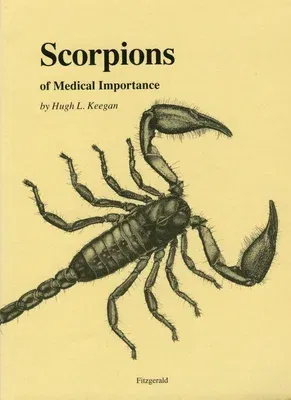Scorpions of Medical Importance by Hugh L. Keegan This publication is an
account of the distribution, morphology, biology and classification of
those scorpions considered to be of medical importance. The book also
contains information on the clinical aspects of scorpion envenomation,
and on methods for scorpion control. Though the scope of the book is
clearly delineated by its title, Scorpions of Medical Importance,
Professor Keegan does consider those genera and species of scorpions
that are not of medical importance, but commonly occur in association
with man, and are often greatly feared. He has done so because of the
scorpion's potential as a stimulus for entomophobia. While this fear,
created in part by folklore, dramatic but inaccurate literature, and
television and motion picture sequences, is useful in areas where
dangerously venomous scorpions exist, it has also created much needless
apprehension. It will surely be a revelation to many readers that of the
approximately 800 species that have been described, only about 50 have
been reported as being dangerous to man. A valuable feature of Scorpions
of Medical Importance is the outstanding drawings that have been used to
illustrate the species. It is not often that one comes across drawings
so striking in their precision and attention to even the most minute
details. As one of the very few books dealing solely with the general
subject of scorpions of medical importance, this publication should be a
useful reference for all those interested in the distribution, biology,
and control of dangerously venomous scorpions, and in clinical aspects
of scorpion envenomation. The book contains an index, bibliography, and
pertinent references to related species not discussed in the book. Hugh
L. Keegan was a professor in the Department of Preventive Medicine at
the University of Mississippi Medical Center in Jackson, MS. Prior to
that, Professor Keegan had been a career officer in the United States
Army. His military duties gave him the opportunity to travel extensively
in East and Southeast Asia and South America. Professor Keegan is an
internationally recognized authority on the distribution of venomous
species and on the effectiveness of antivenins for the treatment of
bites and stings by venomous reptiles and arachnids.


